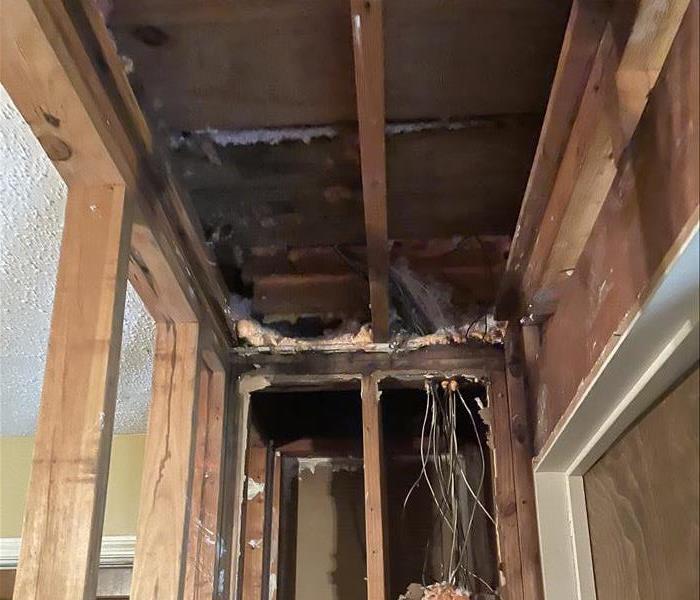Suspecting Mold in Your Home? Here Are the Steps You Should Take
11/23/2023 (Permalink)
At SERVPRO, we understand that the discovery of mold in your home can be concerning. Mold not only damages property but can also pose health risks to you and your family. If you suspect mold is present in your home, it's crucial to take immediate action to address the issue. In this blog post, we want to share our knowledge and provide you with a step-by-step guide on what to do if you suspect mold in your home. Your health and the well-being of your family are our top priorities.
1. Stay Safe:
First and foremost, prioritize safety. Mold can release spores that may be harmful when inhaled or come into contact with your skin. To protect yourself:
- Avoid touching or disturbing the mold.
- Use personal protective equipment (PPE), such as gloves, goggles, and a mask, when dealing with mold.
2. Identify and Document Mold:
Locate and identify the areas affected by mold growth. Take photos and document the extent of the problem. This information will be useful for assessment and remediation.
3. Address Moisture Sources:
Mold needs moisture to thrive, so it's essential to address any water or moisture sources:
- Repair leaks in plumbing, roofing, or windows.
- Remove or mitigate the source of moisture, such as excessive humidity or condensation.
4. Isolate the Affected Area:
To prevent mold spores from spreading to other parts of your home:
- Seal off the affected area by closing doors and windows.
- Use plastic sheeting and tape to create a containment barrier.
5. Ventilation:
Improve ventilation in the affected area to help reduce moisture and prevent the buildup of mold spores:
- Use fans and dehumidifiers to aid in drying and improving air circulation.
- Ensure that exhaust fans in bathrooms and kitchens are functioning correctly.
6. Consult with Professionals:
While you can take some initial steps, mold remediation is best handled by professionals:
- Contact a certified mold remediation specialist like SERVPRO to assess the mold and provide a plan for safe and effective removal.
- Avoid attempting to clean large mold infestations yourself, as improper handling can worsen the problem.
7. Mold Testing:
If you are unsure about the type and extent of mold in your home, you may consider mold testing:
- Mold testing can provide valuable information about the mold species and spore levels present.
- Consult with a certified mold inspector to determine if testing is necessary.
8. Remediation and Cleanup:
Once a remediation plan is in place, professionals will begin the mold removal process:
- Mold remediation involves safely removing and disposing of mold-contaminated materials.
- Cleanup includes thorough cleaning and disinfection to prevent mold from returning.
9. Preventive Measures:
After remediation, take preventive measures to reduce the risk of future mold growth:
- Maintain proper ventilation and humidity levels in your home.
- Routinely inspect and address any potential moisture sources or leaks.
10. Monitor and Reassess:
Regularly monitor the previously affected area to ensure that mold does not return. If you notice any signs of mold recurrence, take action promptly.
By following these steps and seeking professional assistance, you can effectively address mold issues in your home and create a safe and healthy living environment for you and your family. At SERVPRO, we are committed to helping you through the mold remediation process and ensuring your home is mold-free. Your health and peace of mind are our top priorities, and we're here to support you every step of the way.






 24/7 Emergency Service
24/7 Emergency Service
